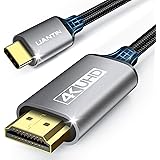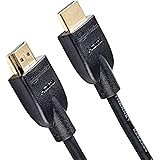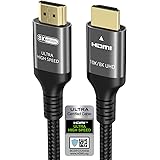A home theater pc, sometimes known as a media center computer, is a personal computer configured to manage digital audio and video content. It’s used to play movies, TV shows and other digital media from a hard drive or other external storage devices. Unlike standard desktop computers, HTPCs typically feature quieter fans and specialized software designed to integrate with home entertainment systems. The term also applies to digital media servers and convergence devices that incorporate a PC into a single unit co-located with a home theater system.
HTPCs can be purchased pre-configured with the necessary hardware and software to handle digital media programming. Enthusiasts can also build their own HTPCs from the components available from computer and electronics retailers. The specialized hardware in a home theater pc differs from standard desktop PCs because it is optimized for entertainment purposes, such as with high-quality sound cards and quieter cooling systems. It also uses a proprietary version of Windows or Linux-based operating systems, such as the popular Kodi (formerly XBMC) platform.
Home theater pcs are usually built to be small and quiet. They have smaller power supplies, which consume less energy and cause less noise. Their chassis and cooling systems are more compact, as well. Some are designed to be tucked away in a case or mounted under a television set, and the best options use quiet fans that don’t interfere with TV and home cinema systems.
The smallest home theater pcs, like the Intel Compute Stick, are barely larger than a television streaming device. They plug directly into a TV’s HDMI port and can be powered from an AC adapter or a battery. Streaming services are integrated into most of the more affordable models, but they may not offer as many movie and TV show titles as dedicated services such as Amazon Prime.
If you’re looking for a more powerful home theater pc, the Origin Chronos features a six-core AMD Ryzen processor and an Nvidia GeForce GTX 1060 Super graphics card. It can handle demanding video games and 4K HDTVs at the same time, and it’s upgradeable to higher-end CPUs and GPUs for future-proofing.
Even a standard laptop can be converted into an HTPC by installing specialized media player software and connecting it to a TV via an HDMI cable. However, this type of setup isn’t as quiet or power-efficient as a purpose-built system. You’ll also need to carefully consider the placement of your laptop and how you’ll route cables behind the TV.
Regardless of your setup, the most important factor is that the PC can run media smoothly and without lag. To ensure that, you’ll need a fast CPU and a generous amount of memory. To optimize the performance of your PC, connect it to a TV with an HDMI 1.4 cable or better, and choose “Extend” from the display settings menu in Windows (listed as a monitor). This will give you full HD on the TV screen.









